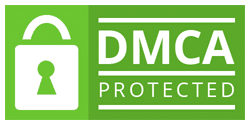618
1. Why do you think major auto manufacturers do not build ambulances?
2. What is an alternative process strategy to the assembly line that Wheeled Coach currently uses?
3. Why is it more efficient for the work cells to prepare “modules” and deliver them to the assembly line than it would be to produce the component (e.g., interior upholstery) on the line?
4. How does Wheeled Coach determine what tasks are to be performed at each workstation?
Top of Form
Bottom of Form
Document Preview:
Case5_Group5_21/11/2018_Discussions and Submission Case examines the process strategy at Wheeled Coach, the US’s largest manufacturer of ambulances. Chapter 7 turns to helping managers find the best way to produce their goods. A process strategy is how a company, like ambulance manufacturer Wheeled Coach, the world’s largest, transforms its resources into finished products. The 350 employees at Wheeled Coach make only custom-made ambulances. Virtually every vehicle is different. Wheeled Coach accommodates this growth by providing a wide variety of options and an engineering staff accustomed to innovation and custom design. Wheeled Coach’s growth, now requiring that more than 20 ambulances roll off the assembly line each week, makes process design a continuing challenge. Wheeled Coach’s response has been to build a focused factory: Wheeled Coach builds nothing but ambulances. Within the focused factory, Wheeled Coach established work cells for every major module feeding an assembly line, including aluminum bodies, electrical wiring harnesses, interior cabinets, windows, painting, and upholstery. Labor standards drive the schedule so that every work cell feeds the assembly line on schedule, just-in-time for installations. The chassis, usually that of a Ford truck, moves to a station where the aluminum body is mounted. Then the vehicle is moved to painting. Following a custom paint job, it moves to the assembly line, where it will spend seven days. During each of these seven workdays, each work cell delivers its respective module to the appropriate position on the assembly line. During the first day, electrical wiring is installed; on the second day, the unit moves forward to the station at which cabinetry is delivered and installed, then to a window and lighting station, on to upholstery, to fit and finish, to further customizing and finally to inspection and road testing. Discussion 1. Why do you think major auto manufacturers do not build ambulances? 2. What…
Attachments:
 Case5-Group5-….docx
Case5-Group5-….docx Case5-Group5-….docx
Case5-Group5-….docx





